Liver transplant - series
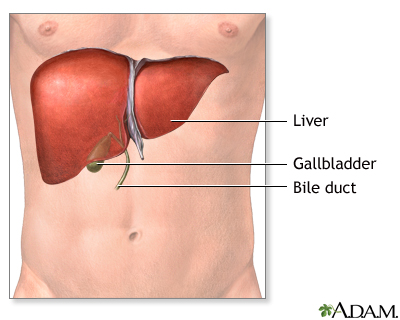
Normal anatomy
The liver is in the right upper abdomen. The liver serves many functions, including the detoxification of substances delivered to it from the intestines, and the synthesis of many proteins.
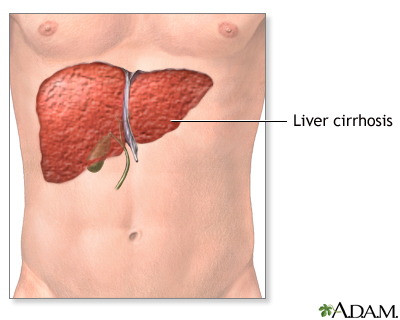
Indications
A liver transplant may be recommended for:
- Liver damage due to alcoholism (Alcoholic cirrhosis)
- Primary biliary cirrhosis
- Long-term (chronic) active infection (hepatitis)
- Liver (hepatic) vein clot (thrombosis)
- Birth defects of the liver or bile ducts (biliary atresia)
- Metabolic disorders associated with liver failure (for example, Wilson disease)
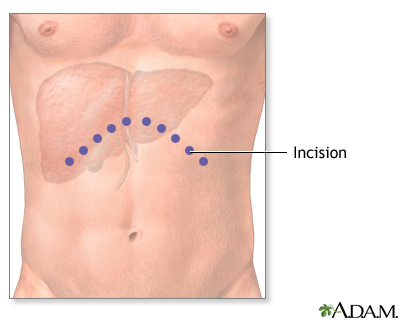
Incision
Liver failure causes many problems, including malnutrition, problems with blood clotting, bleeding form the gastrointestinal tract, and jaundice. Frequently, patients who undergo liver transplantation are quite ill, and require hospitalization in the Intensive Care Unit prior to surgery. A large, upper abdominal transverse incision is used for liver transplant.
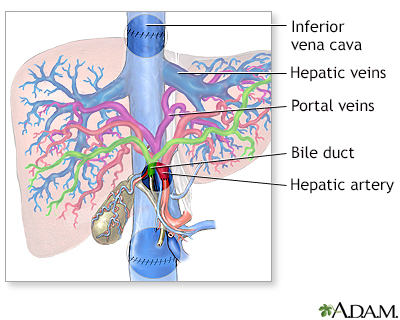
Procedure
Liver transplants are performed in many centers across the country. The healthy liver is obtained from a donor who has recently died but has not suffered liver injury. The healthy liver is transported in a cooled saline solution that preserves the organ for up to 8 hours, thus permitting the necessary analysis to determine blood and tissue donor-recipient matching. The diseased liver is removed through an incision made in the upper abdomen. The new liver is put in place and attached to the patient's blood vessels and bile ducts. The operation can take up to 12 hours to complete and requires large volumes of blood transfusions.
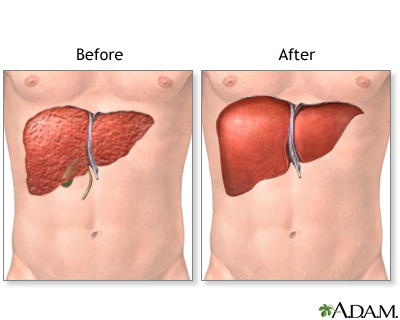
Aftercare
Patients require hospital care for one to four weeks after liver transplant, depending on the degree of illness. After liver transplantation, patients must take immunosuppressive medications for the rest of their lives to prevent immune rejection of the transplanted organ.
BACK TO TOP
Review Date: 5/4/2022
Reviewed By: Michael M. Phillips, MD, Emeritus Professor of Medicine, The George Washington University School of Medicine, Washington, DC. Also reviewed by David C. Dugdale, MD, Medical Director, Brenda Conaway, Editorial Director, and the A.D.A.M. Editorial team.

Health Content Provider
06/01/2025
|
A.D.A.M., Inc. is accredited by URAC, for Health Content Provider (www.urac.org). URAC's accreditation program is an independent audit to verify that A.D.A.M. follows rigorous standards of quality and accountability. A.D.A.M. is among the first to achieve this important distinction for online health information and services. Learn more about A.D.A.M.'s editorial policy, editorial process and privacy policy. A.D.A.M. is also a founding member of Hi-Ethics. This site complied with the HONcode standard for trustworthy health information from 1995 to 2022, after which HON (Health On the Net, a not-for-profit organization that promoted transparent and reliable health information online) was discontinued. |
The information provided herein should not be used during any medical emergency or for the diagnosis or treatment of any medical condition. A licensed medical professional should be consulted for diagnosis and treatment of any and all medical conditions. Links to other sites are provided for information only -- they do not constitute endorsements of those other sites. © 1997- 2024 A.D.A.M., a business unit of Ebix, Inc. Any duplication or distribution of the information contained herein is strictly prohibited.
